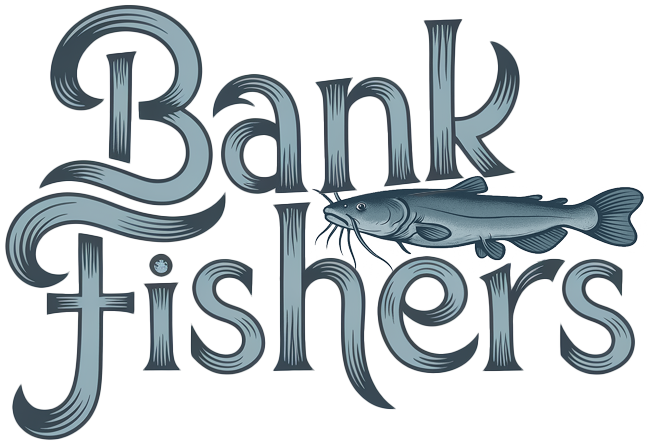
Prerequisites
- None
Materials Needed
- Fishing Pole
- Bait
- Lure (optional)
If you’re wondering, “What’s the best starting fishing gear for beginners?” you’re not alone.
I’ve helped many newcomers navigate the ocean of options, and truth be told, the right gear can make or break your first fishing trips.
Generally, beginners start with a medium-action spinning rod and reel combo, paired with monofilament fishing line, hooks, sinkers, bobbers, and a few handy tools like needle-nose pliers.
Oh, and don’t forget your fishing license—it's a must-have to keep fishing legal and sustainable.
In this guide, I’ll walk you through all the essentials, including tailored advice for fly fishing and ice fishing setups, so you’re ready to cast your line with confidence.

What Is the Essential Starting Fishing Gear for Beginners?
Starting fishing gear for beginners revolves around simplicity and practicality. You’ll want:
- Fishing rod and reel combo: A medium-action spinning combo, 6-7 feet long, offers versatility for a variety of fish.
- Fishing line: Monofilament line in the 6-12 lb test range is ideal for ease of use and durability.
- Hooks: Carry a selection from #10 (small) to 1/0 (large) to cover fish sizes.
- Sinkers and Bobbers: Split shot and egg sinkers for depth control, bobbers to signal bites visually.
- Lures or bait: Live worms, spinners, soft plastics—choices depend on local fishing conditions.
- Tools: Needle-nose pliers for hook removal, a tackle box for organization.
- Fishing license: Legally required in most places and supports fishery conservation.
This setup is your launchpad for a smooth, enjoyable fishing experience without overwhelm or excess.
As fishing educator Ben Verner highlights, “Focus on gear that gets you fishing quickly—complexity can wait.” Source: Take Me Fishing Beginner Gear Checklist

How to Choose the Right Fishing Rod and Reel Combo?
Selecting the perfect fishing rod and reel combo might feel tricky, but here’s a straightforward approach:
- Opt for a 6-7 foot medium or medium-light power rod with moderate action—this balances casting distance and fish-fighting ability.
- A spinning reel sized 1000-2500 with a gear ratio around 5.2:1 to 6.2:1 ensures smooth retrieval.
- Look for trusted brands like Ugly Stik GX2 or Pflueger President that offer beginner-friendly durability.
This combo helps new anglers cast comfortably and tackle common freshwater species without frustration.
Remember, the right equipment doesn’t just perform well; it builds your confidence. Source: Take Me Fishing How to Fish
Which Fishing Lines Work Best for Beginners?
Monofilament fishing line, tested between 6 and 12 lbs, is widely recommended for beginners.
Why? It’s flexible, knots well, and absorbs the shock when a fish strikes — super important for avoiding early lost catches.
Braided or fluorocarbon lines might tempt you with their perks but be warned: they require sharper handling and more advanced knotting skills.
Stick with monofilament for your foundational starting fishing gear. Source: Fishing Booker Beginners Gear
What Hook Sizes Should Beginners Have?
When stocking your tackle box, have a variety:
- Small Hooks (#10 to #8): Ideal for panfish and smaller species.
- Medium Hooks (#6 to #4): Great for bass, trout, and similar fish.
- Larger Hooks (#2 to 1/0): Suitable for bigger freshwater fish.
Including bait hooks, treble hooks, and circle hooks gives you flexibility depending on your bait and fishing style.
Variety here means readiness for nearly any bite scenario that comes your way. Source: Wildlife Utah Beginner Equipment Guide
How to Select Sinkers, Weights, and Bobbers?
Sinkers like split shot or egg sinkers are your depth controllers, letting bait sink to where fish hang out.
Bobbers float on the surface and serve as obvious bite alerts.
Adjusting the bobber’s position on your line lets you fine-tune bait depth.
Usually, sinkers sit a few inches above the hook on the leader, making your bait presentation natural and effective.
This combo of sinkers and bobbers is simple but transformative for beginners in bite detection. Source: Take Me Fishing Beginner Gear Checklist
What Lures or Bait Are Best for Starters?
Start with live bait like nightcrawlers, minnows, or crickets—these are universally effective and straightforward.
For artificial options, spinnerbaits, soft plastic worms, crankbaits, and jigs win the day.
Soft plastics especially are beginner-friendly, forgiving, and attract a wide range of fish.
Test a few according to the species and seasons you’re fishing—it’s a great way to learn fish behavior firsthand. Source: Fishing Booker Beginners Gear
Why You Need a Fishing License and How to Get One
A fishing license isn't just bureaucracy; it helps conserve fish populations and funds management programs critical for sustainability.
You can get yours online or at authorized vendors through your local fish and wildlife agency.
Keep it on you every time you fish—regulations vary by state and species, so staying legal keeps your fishing guilt-free and supports the whole ecosystem. Source: U.S. Fish and Wildlife Service Guide
Basic Tools Every Beginner Should Have
Don't underestimate how needle-nose pliers simplify hook removal and gear tweaks—these save fingers and time.
Add in a well-organized tackle box to keep all those hooks, lures, and lines tidy; trust me, chaos on the water isn't fun.
Good tools keep your fishing smooth and frustration at bay. Source: Take Me Fishing Beginner Gear Checklist
Special Gear for Fly Fishing Beginners
Fly fishing is a whole other adventure demanding specific gear:
- A 9-foot, 5-weight fly rod and a reel with a smooth drag system.
- Weight-forward floating fly line for accurate, easy casting.
- Accessories like backing, tapered leaders, tippets, a fly box, and line nippers.
- Extras such as forceps, strike indicators, polarized sunglasses, waders, and suitable clothing.
This setup helps novices grasp casting delicacy and fly presentation essential to fly fishing success.
“Fly fishing requires finesse and gear that supports learning curves,” says Josh Reed, a seasoned angler and instructor. Source: Orvis Fly Fishing for Beginners
What Are Backing, Leaders, Tippets, and Key Flies?
Backing provides extra line length and shock absorption behind the reel, leaders taper line thickness for a natural fly presentation, and tippets are the thin sections tied to flies—nearly invisible but crucial for strength.
Carry a balanced selection of dry flies, nymphs, and streamers suited to local waters to cover all bases. Source: Orvis Fly Fishing Gear Guide
Essential Fly Fishing Tools: Fly Boxes and Line Nippers
A waterproof fly box keeps your flies safe and organized, while line nippers enable precise cuts for fine-tuning your leader and tippet length.
These tools are sticky companions on your fly fishing journey for gear management and smoother casting. Source: Orvis Fly Fishing Gear Guide
What You Need to Start Ice Fishing
Ice fishing calls for its own special gear:
- Ice auger for drilling clean holes.
- A shorter, stiffer ice fishing rod and spinning reel combo.
- Tip-ups that signal a catch.
- Live bait like minnows or wax worms.
- Ice scoops or skimmers to clear holes.
- Portable shelters and warm, insulated clothing.
- Safety gear including waterproof boots and ice cleats.
Always double-check the ice thickness (at least 4 inches for walking) before stepping on. Comfort and safety come first, always. Source: Take Me Fishing Ice Fishing Essentials
Beginner Ice Fishing Rod and Reel Combos
Go for rods 24-30 inches with light to medium-light power and fast-action tips, paired with smooth, cold-resistant spinning reels.
Brands like Frabill, Shakespeare Ugly Stik, Berkley Lightning Rod, and Fenwick are solid starting points.
This balance of sensitivity and durability lets you detect bites easily in harsh icy conditions. Source: Take Me Fishing Ice Fishing Essentials
Ice Line, Lures, and Jigs for Beginners
Use light lines (2-6 lb test) with brightly colored spoons and soft plastic minnows.
Lead-head jigs in 1/32 to 1/8 ounce sizes, tipped with wax worms or small fish bait, work wonders.
Jig with rhythmic pauses to mimic injured prey—that’s a classic trigger for strikes.
Keep your line taut and rod tip sensitive for best results. Source: Take Me Fishing Ice Fishing Essentials
How to Use Ice Augers and Skimmers Like a Pro
Drill holes with steady pressure and sharp blades, clearing ice shavings regularly to keep drilling smooth.
Use scoops and skimmers frequently to remove slush and prevent holes from freezing over.
Also, keep tool handles dry and warm to avoid ice buildup, which is a small but crucial tip for working efficiently on the ice. Source: Take Me Fishing Ice Fishing Essentials
Clothing and Shelter for Ice Fishing Comfort
Dress in layers—think moisture-wicking bases, fleece mid-layers, waterproof tops. Insulated boots, gloves, and hats that cover your ears are non-negotiable.
Portable insulated shelters or tents with heaters let you fish longer comfortably.
Ice cleats make footing safer—a must on slippery ice. You’ll thank yourself for this when the cold bites. Source: Take Me Fishing Ice Fishing Essentials
Expert Angler Insights: Ben Verner, Josh Reed, Jason Hart, and Doc Reed
These experienced anglers stress starting simple but aiming for quality.
They recommend medium-action spinning combos with 6-12 lb monofilament lines, carrying basic tackle—hooks, sinkers, bobbers, soft plastics or live bait—and practicing casting knots and techniques regularly.
Their shared advice points to understanding local waters, prioritizing safety, dressing comfortably, and embracing patience as essential ingredients to fishing success.
“Fishing is as much about mindset as it is gear,” Doc Reed sums it up succinctly.
Conclusion: Key Takeaways
- Start with a versatile medium-action rod and reel combo paired with monofilament line (6-12 lb test).
- Equip yourself with varied hooks, sinkers, bobbers, and both live bait and beginner-friendly lures.
- Secure your fishing license early and adhere to local regulations.
- Invest in quality basic tools like needle-nose pliers and a tackle box for smoother outings.
- For fly fishing, go for a dedicated rod, reel, fly line, and essential accessories.
- Ice fishing demands specialized, compact gear plus insulated clothing and safety awareness.
- Learn from the pros by focusing on gear quality, local knowledge, and patience.
Ready to gear up? Start small, stay curious, and most importantly—enjoy the process.
If you have questions or want more tips, feel free to reach out or share your fishing experiences!


